AOTWP BLOG |
|
Day 3 we were back at the Binatang Research Center. The morning started with a demo by the instructors on how to mount an ant. Students then went back to their lab stations to try it themselves. Putting an ant on a pin is tedious and careful work, the students had to learn to relax themselves throughout the process in order to do it successfully.  Students took a pause from lab work to listen to a lecture by Michael Branstetter on Formicinae. Michael discussed the diversity and distribution of this subfamily and how it is 2nd largest sub-family of ants in the world. As it contains 3,244 known species that fall into 11 tribes. Students also learned that Papua New Guinea is known to have 355 species for this subfamily. Jack Longino also did a presentation on some of the subfamilies in the Formoicoid clade. Jack spent some time discussing his expertise on army ants too. Phil Ward presented soon after on the subfamily Myrmecinae and their very diverse nesting, feeding, and social behaviors. Students refer to these subfamily-related lectures throughout the course especially in the field, and for identification later. After some time committed to lab work, the instructors and students took a small field trip to a local tree known for having ant plants. We were guided by the BRC staff and locals through the village to a nearby beach. Students got the chance to climb the tree to see the ant plants for collecting purposes. Our night ended with part two to the student seminars. The students who presented were Josiah Kilburn, Juliet Turner, Arthur Matte, Vibhuti Bhat, Mael Dore, Joshua Spitz, Tristan Klaftenberger, and Emmeline van Roosmalen
Day 2 was our first day in the field. We were driven to the rainforest in Baitabag to start collecting. The Binatang Research Center also has their canopy crane here. Students were able to disperse in groups and start their collecting. A few popular spots for collecting in the field was a termite mound that was found, the base of rotting trees, even a group was near a river to see what they could find. Students also got the chance to practice some of the collecting methods shown. Malaise traps were set up, which are used to trap and preserve ants. Those attempting at collecting from low elevation branches on trees used a beating sheet. A couple of methods were used to collect leaf litter. Such as the Winkler method, where students put leaf litter into a sifter, the sifted sample is then extracted later to collect smaller ground ants. Students also got the try the Lloyd Sifter method, where sifting trays are used in the field to collect. A student group also tried baiting, where they used a trail of canned tuna in hopes to spot some hungry ants. Our night concluded with student presentations where they got the chance to discuss the current research that they are doing. Tonight we got to hear from Olivia Bates, Fracois Brassard, Mattia Mechetti, Enrico Schifano, Dr. Priscila E. Hanish, Nils-Christian Schumacher, Sophie Mallett, and Aswaj Punnath
Ant Course 2023 in Papua New Guinea has officially started. After a few bumps in the road with travel, our instructors and participants have safely arrived to the Binatang Research Center. Day 1 consisted of multiple lectures to help set the stage for world ants. Course participants range in education levels from Doctorate to Undergraduate. The lectures hope to give all students enough knowledge to have a successful time in the course. Our morning started out with a presentation by Ant Course Instructor Phil Ward. Phil presented on ant phylogeny and the classification of ants. This was a baseline introduction to the world of ants, in hopes to set the stage for all students. Phil spent some time walking through the 3 major clades: Leptanillomorphs, Poneroid, and Formicoid. Students will be referring to subfamilies in these clades throughout the course. The second presentation of the day was done by Flavia Esteves on morphology. Students got the chance to learn about identification and parts of the ant. She discussed the diagnostic characters of ants which included, the metapleural gland, the elongate first antennal segment, and the abdominal segment. Flavia provided another presentation in the day that got into the specifics of identifying genera. Students got the opportunity to hear from Brian Fisher too. Brian discussed data collecting for our first day in the field tomorrow. He went over the importance of keeping record of data for specimens. Students were informed that good science contains transparent and raw data. Brian walked through how to label specimens and how to record that in their field book. Brian also did a second talk about Ponerinae in which he discussed biological diversity of the genera. Diversity ranges far as some genus living in pristine habitats, while others live in disturbed sites. A portion of the afternoon was used to demo field methods for tomorrow. Students got to learn from the instructors about these collection methods which included the malaise trap, both the Winkler method and Lloyd method for sifting leaf litter, and baiting. Students will get the chance to use these methods in the field. Our first seminar tonight was done by Philipp Höenle, who is currently staying at the BRC. Philipp introduced the ants in Papua New Guinea and their biogeography.
Tomorrow we will be heading to Baitabag for our first day in the field. After a couple years of delay due to the pandemic, August 2022 marks the 20th Ant Course session to date. This year it is hosted at the Cuc Phuong National Park (Vườn Quốc Gia Cúc Phương) in Vietnam. Participants and instructors from around the globe gather to learn, collaboration, and ask questions in the field of Myrmecology. These researches come from various backgrounds and places, but are united in their interest and curiosity about ants. Meet the people of Ant Course 2022: Vietnam  Dr. Brian Fisher is an Ant Course instructor. He scientist, speaker and teacher with a passion for ants. His vast array of work across the globe addresses crucial questions about ant taxonomy, biodiversity, and conservation.  Dr. Micheal Branstetter is an Ant Course Instructor. He is a Research Entomologist with USDA, Agricultural Research Service. He specializes in pollinating insects at Utah State University.  Dr. Bonnie Blaimer is one of the Ant Course instructors. She is a research scientist at the Center for Integrative Biodiversity Discovery and the Scientific Head for the Hymenoptera collection. Her interests lie in evolution, community ecology, biogeography and ant systematics.  Dr. Phil Ward is an Ant Course instructor. He is an entomology professor at the University of California Davis. He specializes in systematics, biogeography and evolution of ants, ant-plant mutualisms, and phylogeny and speciation. Dr. An Dang is one of the Ant Course instructors. He is a researcher in the Department of Soil Ecology at Vietnam Academy of Science and Technology.  Andrea Lucky is an AntCourse instructor and evolutionary biologist and biodiversity scientist with a focus on insects and invasion. Her training is specifically in the evolution of ants.  Dr. John Longino is an Ant Course instructor. He has focused much of his work on the taxonomy of neotropical ants and ecological patterns of ant diversity, as well as studies of biodiversity inventory methodology and regional faunistic work in Costa Rica. Wendy Wang is an Ant Course Instructor and a curator for the Lee Kong Chian Natural History Museum in Singapore. She has experience and interest in Ant Taxonomy & Systematics, Insect Ecology & Evolution.  Dr Flavia Esteves is an AntCourse instructor and an ant taxonomist that loves the rainforests and the ants of Southeast Asia.  Zachary Griebenow is a PhD student from USA. His research is focused upon a systematic revision of the ant subfamily Leptanillinae at the generic level and lower, based upon male morphological data.  Adrian Richter is an Ant Morphology PhD student from Germany. He is currently investigating the evolution of head morphology across the total clade of the Formicidae.  Eva Colberg is a PhD student studying how prescribed burning affects ants' seed-dispersing behavior. In the future, she plans to use ants as bioindicators to compare the effects of fire on myrmecochory.  Felipe Pereira da Rocha is a PhD student studying in Hong Kong. He studies organismal and community ecology of invasive ants in Southeast Asia.  Aline Machado de Oliveira is a research assistant at the University of Hong Kong. For her Vietnam is particularly interesting for her ongoing research as she just moved from South America to Asia, and recently started a project on Southern Chinese ants.  Chloe Jelley is a PhD student studying the evolutionary, and ecological consequences, of varying levels of aggression across ant lineages.  Max Tercel's PhD research focuses on using DNA metabarcoding to investigate the diet of introduced ants on Round Island, Mauritius.  Marie-Pierre Meurville is a grad student from France studying evolution of stomodeal trophallaxis in ants using machine learning. 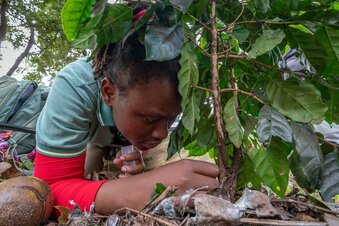 Norina Vicente is researching the diversity and abundance of Formicidae in Gorongosa National Park. She manages the zoological collection, biodiversity data entry, specimens' digital imaging, insect identification, maintenance and organization of collection and survey equipment.  Jake Stone is a third year PhD student at the University of Cambridge, researching smallholder oil palm plantation management and its impact on ant populations in Indonesia and Malaysia.  Elaine Tan is a PhD student, investigating colony founding behaviors local temperate ant species.They want to examine the within-colony and inter-colony interactions that shape the ant population structure.  Shafia Zahra is a grad student investigating the presence of reverse Janzen Connell effect through ant-plants interaction.  Frederik De Wint is a PhD student exploring whether entomopathogenic fungi are able to drive negative density dependence and hence generate and maintain arthropod diversity.  Leo Ohyama is a PhD candidate at the University of Florida. He studies how different facets of biodiversity patterns and processes shift from regional (Florida) to global scales.  Snigdha Mayenkar is a PhD. researcher from the University of Goa- India. She is studying Ant-fungi interactions and how fungi may have contributed to the ecological success of ants. 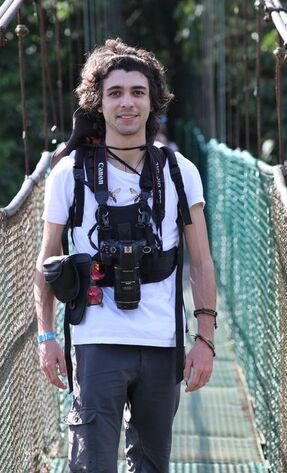 Yannick Juvé is a Ph.D. student at the University of Montpellier, in France. He is assessing the prevalence of a particular reproductive system, called social hybridogenesis, among Messor ant genera and Stenammini tribe.  Davide Bergamaschi's research revolves around the ecology and evolution of ants and their parasites beetles of the genus Paussus from Madagascar with an emphasis on the role of the microbiome.  Lazzat Aibekova is studying the modifications in the skeletomuscular system of mesosoma of ants across the phylogeny. Specifically, studying configurations in ants to perform jumping and other types of locomotion.  Yvonne Koid Qian Qun's research looks at the species co-occurrence patterns of canopy and leaf litter ant assemblages and assessing how biotic and abiotic environmental variables affect their community structure.  Orli Snir's research is about social interactions and evolution of social signals and developmental plasticity. In O. biroi, she is examining the long term implications of larvae consuming it on developmental trajectories and phenotypic variability in the adult stage.  Abusisiwe Ndaba's research works towards creating an identification key of the ant genus Anoplolepis, it’s biogeography and presence of an invasive species (Anoplolepis gracilipes) in Southern Africa. 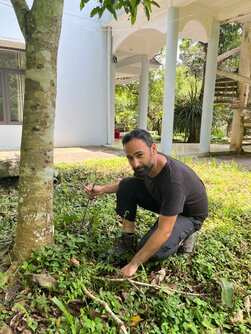 Jonathan Romiguier's research interests focus on links between species ecology and molecular evolution. He studies genome evolution of species with a eusocial lifestyle or atypical reproductive systems. His main model species is the barbarian harvester ant Messor barbarus. |
AuthorWrite something about yourself. No need to be fancy, just an overview. Archives
September 2023
Categories |

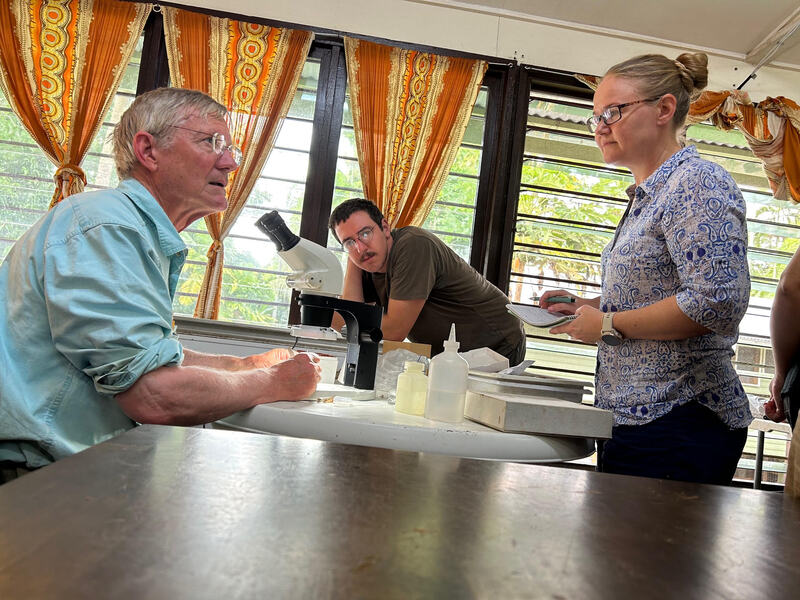

















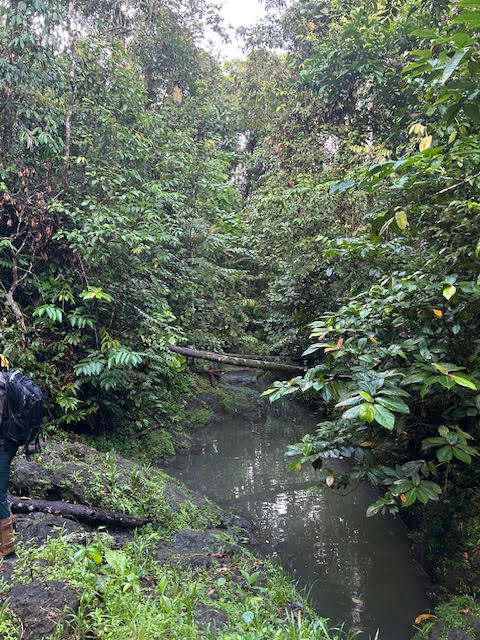

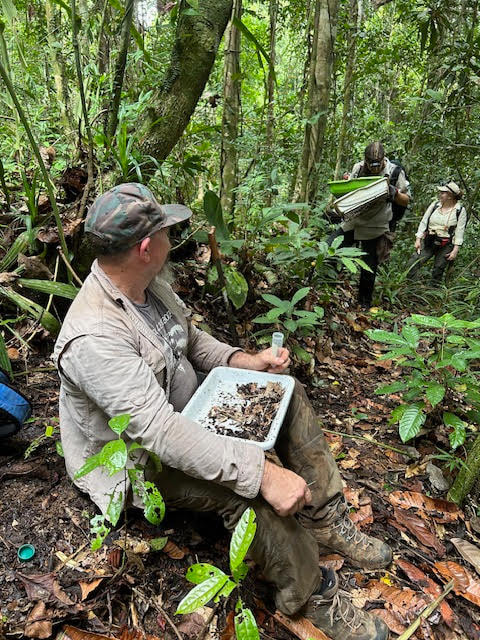







 RSS Feed
RSS Feed